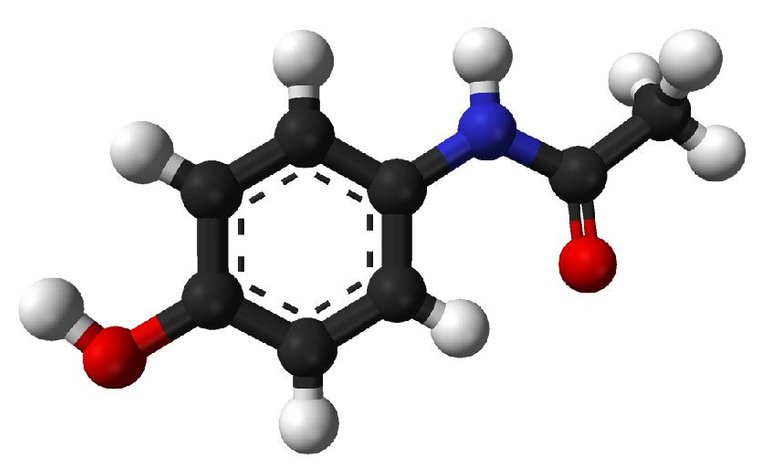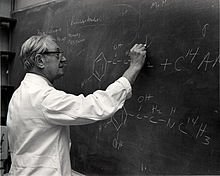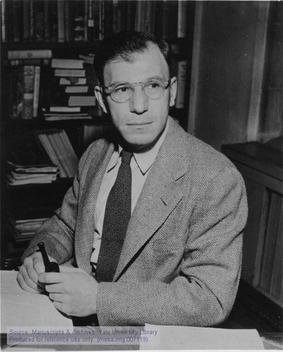Tylenol and Panadol are some of the brand names for acetaminophen or paracetamol, an common medication that people takes for pain and fever. But how is this drug made and what is its history?

SourceParacetamol
Acetaminophen was first synthesized in 1877 by a German chemist named Harmon Northrop Morse, who obtained it by reducing a nitro compound called p-nitrophenol with tin and hydrochloric acid. However, he did not test its pharmacological properties or publish his findings.

SourceJoseph von Mering
Acetaminophen’s pain and fever reducing effects were discovered in 1893 by another German chemist Joseph von Mering, who tested it on himself and his colleagues. He also named it "paracetamol", derived from its chemical name para-acetylaminophenol. However, he did not patent or market his discovery and it remained largely unknown for decades.

SourceBernard Brodie
In 1947 British pharmacist named David Lester and physician named Bernard Brodie published a paper showing that acetaminophen was a safer alternative to aspirin for patients with hemolytic anemia, A condition where red blood cells are broken down. By blocking an enzyme involved in inflammation and pain called cyclooxygenase (COX), acetaminophen worked, they suggested.
In 1955 a US company McNeil Laboratories launched Tylenol as a prescription drug for children with arthritis and fever. In 1958 they introduced Tylenol Elixir, the first liquid form of acetaminophen. They started selling Tylenol without a prescription (OTC) to adults in 1960. Billions of doses of acetaminophen are sold every year, making it one of the world’s most used drugs.

SourceDihydrocodeine
The production of acetaminophen involves several chemical steps. The first step is the nitration of phenol, which is a compound derived from coal tar or petroleum. A mixture of nitrophenols is produced by mixing phenol with sulfuric and nitric acids. The mixture is then filtered to remove any impurities and the nitrophenols are separated from each other through a process fractional distillation. The desired product is 4-nitrophenol, which has a yellow color and a melting point of 114 °C.

SourcePhenol
Next, 4-nitrophenol is reduced to 4-aminophenol, also called p-aminophenol. Various reducing agents can do this, for example tin and hydrochloric acid, iron and hydrochloric acid or sodium borohydride and water. The reduction converts the nitro group (-NO2) into an amino group (-NH2), which makes the compound more soluble in water and more reactive with other substances. The 4-aminophenol has a white color and a melting point of 188 °C.

Source4-Aminophenol
Next, 4-aminophenol is acetylated to acetaminophen, also called p-acetamidophenol or N-acetyl-p-aminophenol. An acylating agent can do this, for example acetic anhydride or acetyl chloride. The acetylation replaces the hydrogen atom attached to the nitrogen atom with an acetyl group (-COCH3), which makes the compound less soluble in water and more stable in acidic conditions. The acetaminophen has a white color and a melting point of 169-170 °C.

SourceParacetamol
Purification of acetaminophen, which can be done by recrystallizing it from water or ethanol, is the final step. The recrystallization removes any impurities or by-products that may have formed during the synthesis. The purified acetaminophen forms large monoclinic prisms that have a shiny appearance and a bitter taste. Measuring its melting point or using different analytical methods, such as infrared spectroscopy or high-performance liquid, can test the purity of acetaminophen.
Sources:
1 https://en.wikipedia.org/wiki/Paracetamol.
2 https://chem.libretexts.org/Ancillary_Materials/Laboratory_Experiments/Wet_Lab_Experiments/Organic_Chemistry_Labs/Experiments/2%3A__Synthesis_of_Acetaminophen_(Experiment).
3 https://www.dane101.com/how-is-acetaminophen-made/.
4 https://now.tufts.edu/2022/09/14/how-does-acetaminophen-work.
5 https://dailyjustnow.com/en/what-was-acetaminophen-originally-made-for-141204/.
Thanks for your contribution to the STEMsocial community. Feel free to join us on discord to get to know the rest of us!
Please consider delegating to the @stemsocial account (85% of the curation rewards are returned).
You may also include @stemsocial as a beneficiary of the rewards of this post to get a stronger support.
Yay! 🤗
Your content has been boosted with Ecency Points
Use Ecency daily to boost your growth on platform!
Support Ecency
Vote for new Proposal
Delegate HP and earn more, by @huruhupes630.
Congratulations @huruhupes630! You have completed the following achievement on the Hive blockchain And have been rewarded with New badge(s)
Your next target is to reach 2000 upvotes.
You can view your badges on your board and compare yourself to others in the Ranking
If you no longer want to receive notifications, reply to this comment with the word
STOPCheck out our last posts:
Support the HiveBuzz project. Vote for our proposal!